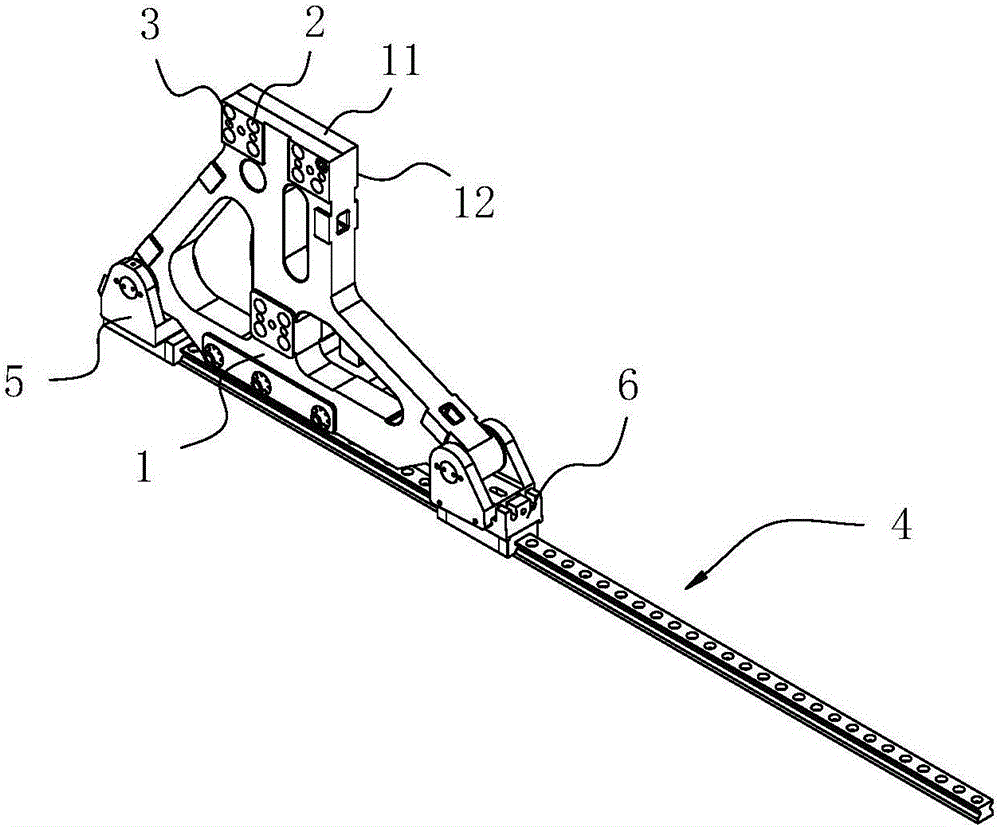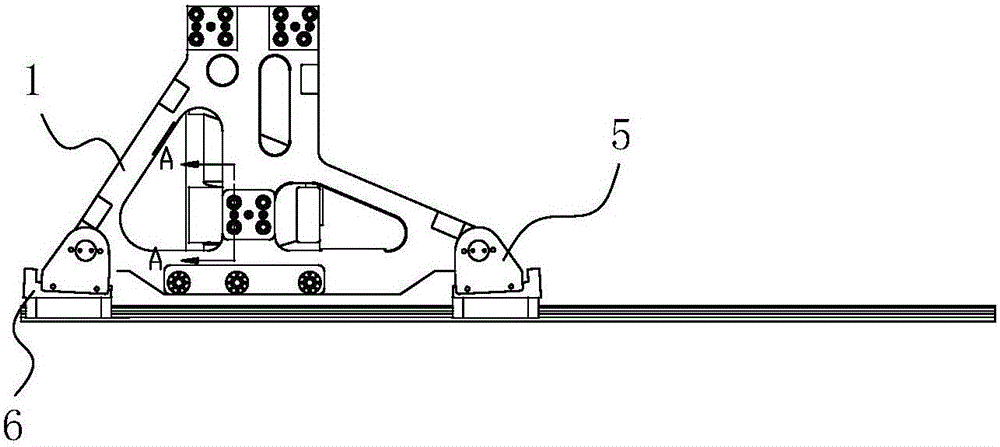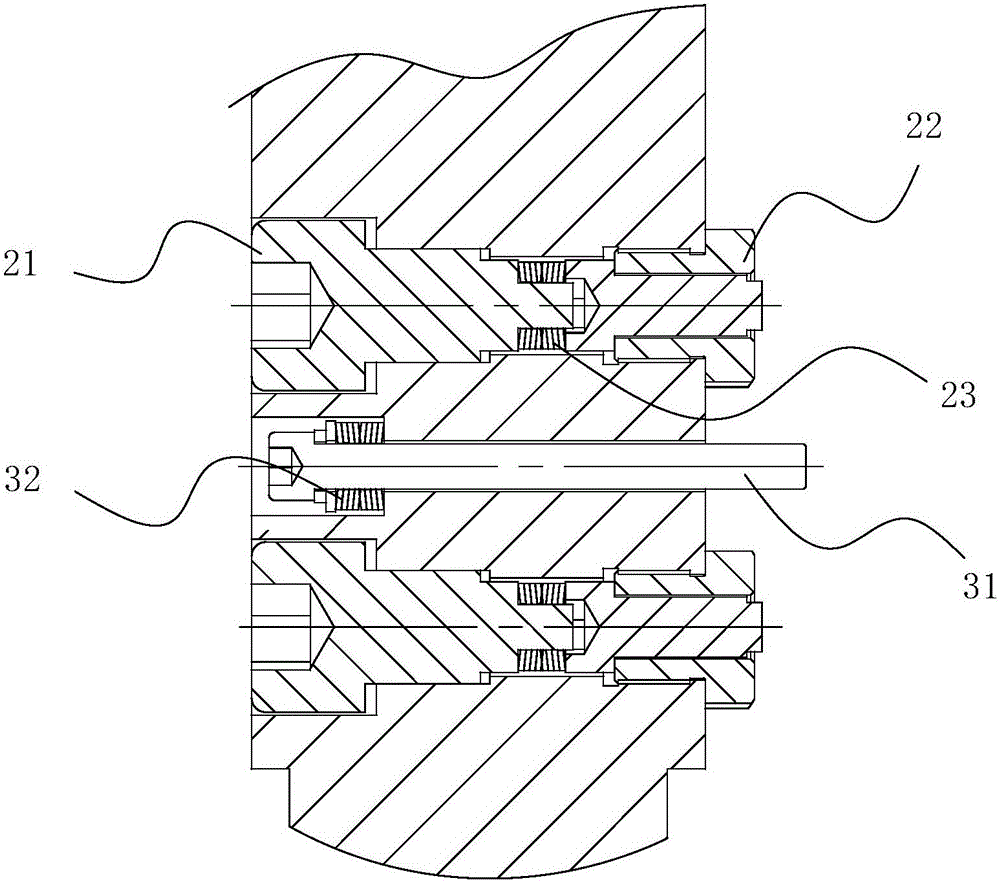Sliding foot assembly and movable mold plate supporting structure using same
A supporting structure and moving template technology, which is applied in the field of pressure forming equipment, can solve the problems of slow mold moving acceleration, large frictional resistance, failure of linear guide rolling elements, etc., and achieve the effect of reducing demand and improving service life
- Summary
- Abstract
- Description
- Claims
- Application Information
AI Technical Summary
Problems solved by technology
Method used
Image
Examples
Embodiment Construction
[0038] The technical solutions of the present invention will be further described below in conjunction with the accompanying drawings and through specific implementation methods.
[0039] like Figure 1-7 As shown, in this embodiment, a slider assembly according to the present invention includes a slider body 1 having a first support end surface 11 and a second support end surface 12 perpendicular to each other, and the slider body 1 is provided with There is an elastic support assembly 2 for directly supporting the supported object in contact with the supported object, one end of the elastic support assembly 2 protrudes from the surface of the second support end surface 12, and the elastic support assembly 2 The other end is fixedly connected with the slider main body 1 .
[0040] In this embodiment, the first support end surface 11 is a horizontal support surface for bearing the force of the supported part on the slider body 1 in the direction of gravity, and the second sup...
PUM
 Login to View More
Login to View More Abstract
Description
Claims
Application Information
 Login to View More
Login to View More - R&D
- Intellectual Property
- Life Sciences
- Materials
- Tech Scout
- Unparalleled Data Quality
- Higher Quality Content
- 60% Fewer Hallucinations
Browse by: Latest US Patents, China's latest patents, Technical Efficacy Thesaurus, Application Domain, Technology Topic, Popular Technical Reports.
© 2025 PatSnap. All rights reserved.Legal|Privacy policy|Modern Slavery Act Transparency Statement|Sitemap|About US| Contact US: help@patsnap.com



